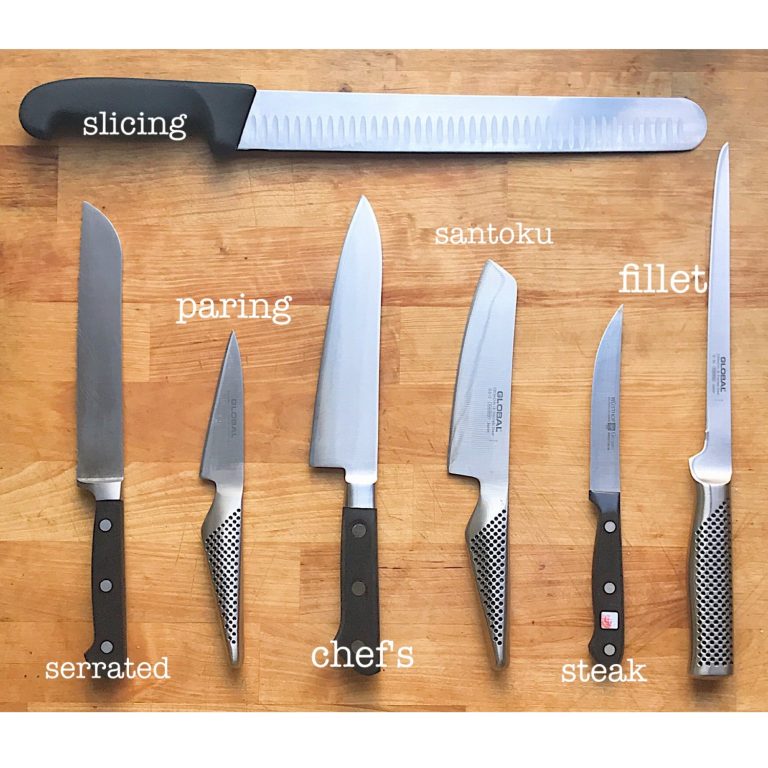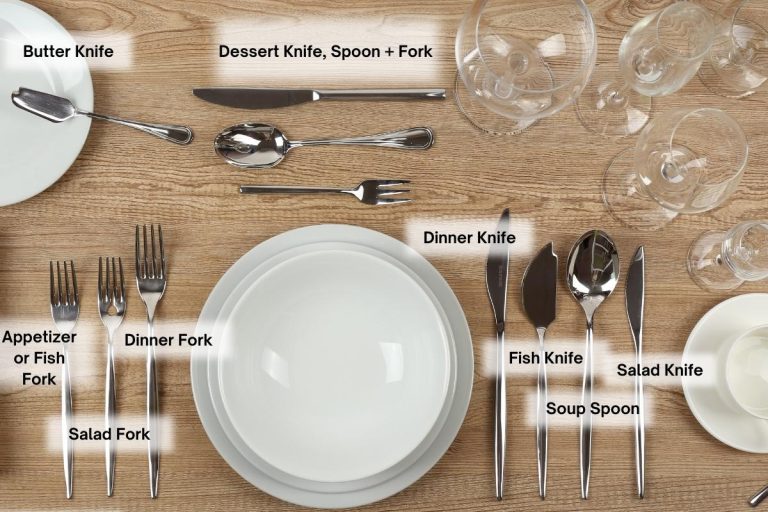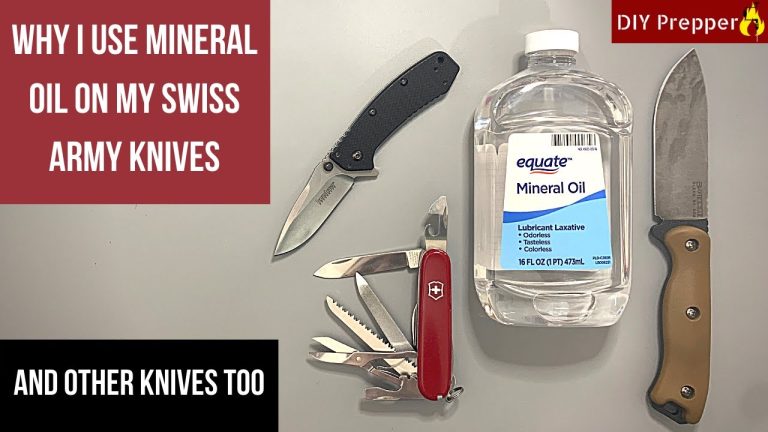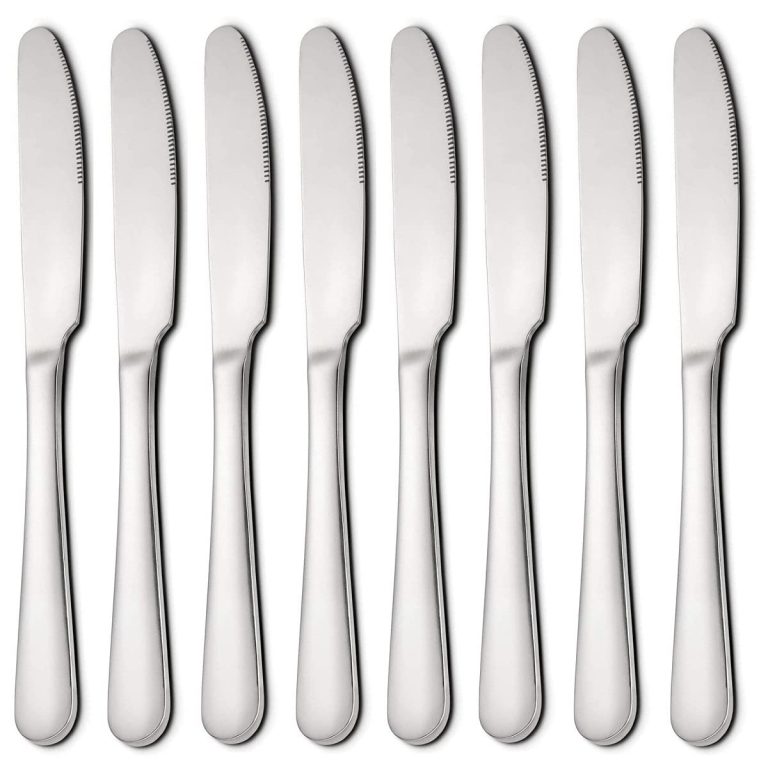Ceramic Knife Vs Steel Knife: The Ultimate Kitchen Showdown
In the world of kitchen tools, knives are essential. Two popular types are ceramic and steel knives.
But which one is better for your kitchen? Choosing between ceramic and steel knives can be confusing. Both types have unique features, and each serves different purposes. Ceramic knives are known for their sharpness and lightweight feel. Steel knives, on the other hand, are valued for their durability and versatility.
This comparison aims to help you understand the strengths and weaknesses of both. By the end, you’ll know which knife type fits your cooking style. Whether you’re a home cook or a professional chef, this guide will clarify your choice, making your kitchen tasks easier and more efficient.
Material Composition
Understanding the material composition of ceramic and steel knives helps in making an informed choice. Both materials offer unique benefits and limitations. Let’s explore the key differences in their material composition.
Ceramic Knife Materials
Ceramic knives are crafted from zirconium dioxide, a very hard material. This ceramic material is formed under high pressure and heat. It results in a blade that is extremely hard and sharp.
The process involves:
- Shaping zirconium powder
- Sintering at high temperatures
- Polishing to achieve a fine edge
These steps produce a knife that stays sharp longer than steel. Ceramic blades are also resistant to rust and do not impart metallic flavors to food. They are perfect for slicing fruits, vegetables, and boneless meats.
Steel Knife Materials
Steel knives are made from a mix of iron and carbon. This combination results in a durable and versatile blade. The steel used can vary in carbon content, affecting the knife’s hardness and toughness.
Types of steel used:
- High-carbon steel: Very hard and sharp, but prone to rust
- Stainless steel: Resistant to corrosion, but may need frequent sharpening
Steel knives can be used for a wide range of tasks, including chopping, dicing, and cutting through tougher materials. They require regular maintenance to keep the edge sharp and prevent rust.
Sharpness And Edge Retention
Choosing between a ceramic knife and a steel knife can be tricky. The sharpness and edge retention of each type are key factors to consider. Understanding these aspects will help you make an informed decision.
Initial Sharpness
Ceramic knives are known for their extreme sharpness right out of the box. They are made from zirconium oxide, a material that allows for a very fine edge. This sharpness makes slicing through fruits and vegetables feel effortless.
On the other hand, steel knives can also be very sharp initially. The sharpness depends on the quality of the steel and the honing process. High-carbon stainless steel knives are particularly known for their initial sharpness. But they may not be as sharp as ceramic knives.
Longevity Of Sharpness
The longevity of sharpness in ceramic knives is impressive. They can retain their edge for a long time because zirconium oxide is very hard. This means less frequent sharpening.
Steel knives, while initially sharp, tend to dull faster. They need more frequent sharpening to maintain their edge. The frequency of sharpening depends on the type of steel and usage. High-quality steel knives may retain their sharpness longer than lower-quality options.
| Criteria | Ceramic Knives | Steel Knives |
|---|---|---|
| Initial Sharpness | Extremely sharp | Very sharp |
| Longevity of Sharpness | Long-lasting | Requires frequent sharpening |
In summary, if you prefer long-lasting sharpness with less maintenance, a ceramic knife might be your best choice. If you enjoy the flexibility of frequent sharpening and honing, a steel knife could be more suitable.
Durability And Maintenance
Choosing the right knife for your kitchen can be a challenge. Understanding the durability and maintenance of ceramic and steel knives can help you make an informed decision. Both types of knives have their own unique advantages and disadvantages. Let’s break down their durability and maintenance aspects.
Ceramic Knife Durability
Ceramic knives are made from a tough, high-grade ceramic called zirconium dioxide. This material is extremely hard, almost as hard as diamonds. As a result, ceramic knives are very sharp and maintain their edge for a long time. You won’t need to sharpen them often.
However, ceramic knives are also brittle. They can chip or break if dropped or used to cut hard materials. They are not suitable for tasks that require flexing or twisting the blade. Proper care and handling are crucial to maintain their integrity.
Steel Knife Durability
Steel knives are known for their strength and flexibility. They can handle a wide range of tasks, from slicing vegetables to cutting through bones. High-carbon stainless steel is a popular choice because it resists rust and corrosion.
Steel knives need regular maintenance to stay sharp. Frequent sharpening and honing are necessary to keep the edge in good condition. Unlike ceramic knives, steel knives can withstand more wear and tear. They are less likely to chip or break.
| Aspect | Ceramic Knife | Steel Knife |
|---|---|---|
| Material | Zirconium Dioxide | High-Carbon Stainless Steel |
| Hardness | Very Hard | Hard but Flexible |
| Edge Retention | Excellent | Good |
| Susceptibility to Chipping | High | Low |
| Maintenance Frequency | Low | High |
Both ceramic and steel knives have their strengths. Ceramic knives offer excellent edge retention and sharpness but require careful handling. Steel knives are versatile and durable, needing regular maintenance to stay sharp.
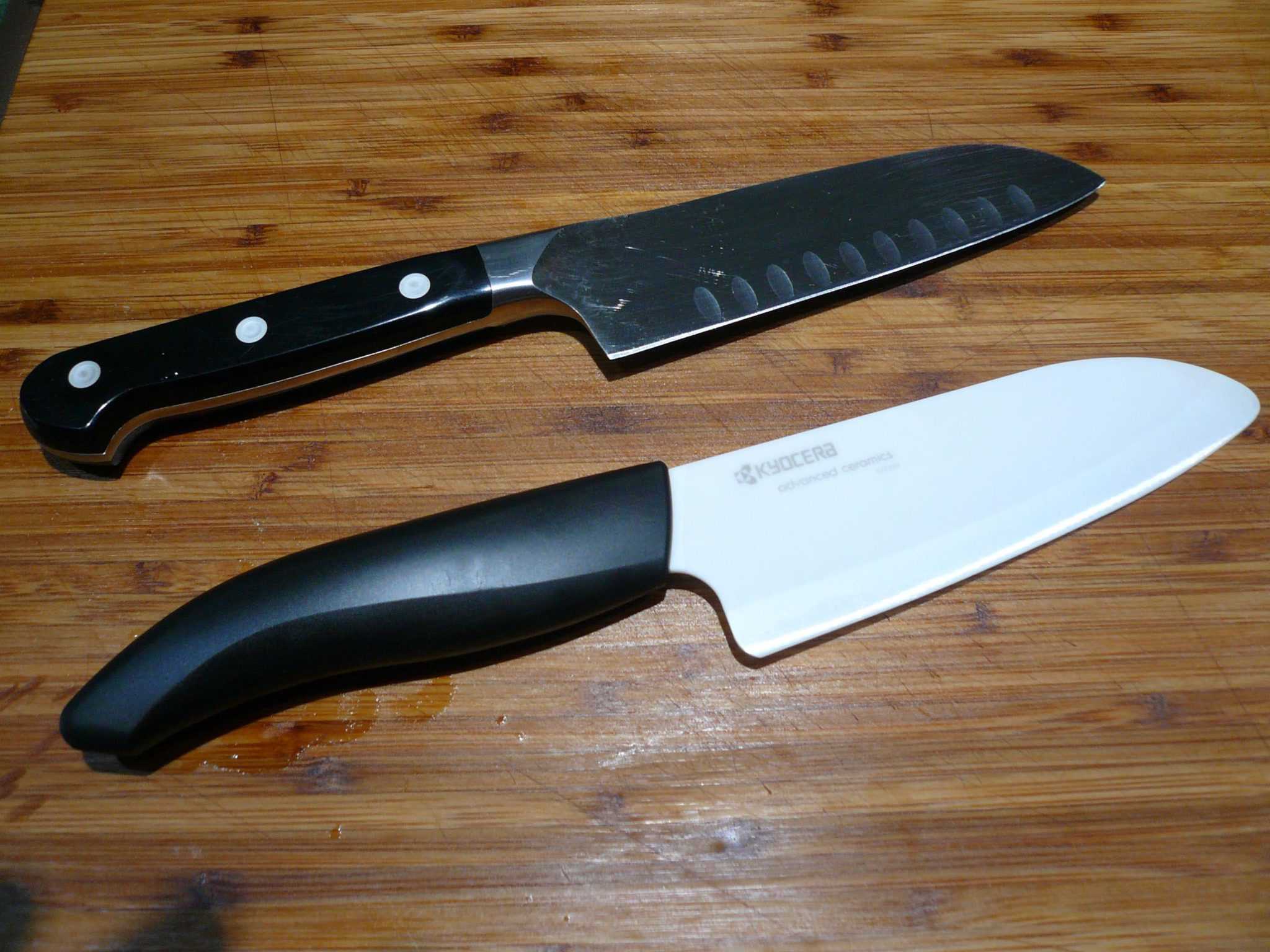
Credit: cookinghacks.com
Cutting Performance
Choosing between a ceramic knife and a steel knife depends on their cutting performance. Both offer unique advantages. Let’s explore their precision cutting and versatility in use.
Precision Cutting
Ceramic knives excel at precision cutting. Their blades are incredibly sharp. They slice through fruits and vegetables with ease. The thin blade allows for precise, clean cuts. You can make paper-thin slices effortlessly.
Steel knives also offer precision cutting. High-carbon steel knives are especially sharp. They can tackle tougher ingredients. The blade can be sharpened repeatedly. This maintains their cutting performance over time.
Versatility In Use
Steel knives are more versatile. They can cut a wide range of foods. From meats to hard vegetables, they handle it all. Their durability makes them suitable for heavy-duty tasks.
Ceramic knives have limitations. They are best for softer foods. Avoid using them on bones or frozen items. Their brittleness can cause them to chip or break. This makes them less suitable for tough cutting tasks.
Weight And Balance
When choosing between ceramic and steel knives, weight and balance play a crucial role. Both types of knives offer unique benefits depending on the user’s preferences and cooking style. This section will explore the differences in weight and balance between ceramic and steel knives.
Ceramic Knife Weight
Ceramic knives are known for being lightweight. This is due to the materials used in their construction. The ceramic blade is made from zirconium oxide, which is significantly lighter than steel. This lightness can be an advantage for those who prefer a knife that is easy to handle and maneuver.
Here’s a quick comparison of the average weight:
| Knife Type | Average Weight (grams) |
|---|---|
| Ceramic Knife | 50-80 |
The reduced weight of ceramic knives makes them ideal for delicate tasks. These tasks include slicing fruits and vegetables.
Steel Knife Weight
Steel knives are heavier compared to ceramic knives. They are constructed from different types of steel, including high-carbon and stainless steel. This added weight can provide a sense of stability and control during use.
Let’s compare the average weight of steel knives:
| Knife Type | Average Weight (grams) |
|---|---|
| Steel Knife | 100-200 |
Steel knives are preferred for tasks that require more force. These include chopping and dicing tougher ingredients.
In summary, the choice between ceramic and steel knives in terms of weight and balance depends on personal preference. Those who value lightness and ease of handling may opt for ceramic knives. Meanwhile, those who prefer a more substantial and balanced feel may choose steel knives.

Credit: oishya.com
Cost And Value
When deciding between a ceramic knife and a steel knife, understanding the cost and value is crucial. Both types offer unique benefits and come with different price tags. Let’s explore how these knives compare in terms of price and long-term value.
Price Comparison
One of the first things to consider is the price. Ceramic knives are generally more expensive upfront. This is due to the materials and manufacturing process. Steel knives, on the other hand, are often more affordable. Here’s a quick breakdown:
| Type of Knife | Average Price Range |
|---|---|
| Ceramic Knife | $30 – $100 |
| Steel Knife | $10 – $60 |
While ceramic knives cost more initially, they require less frequent sharpening. Steel knives are cheaper, but need regular maintenance.
Long-term Value
Considering the long-term value is essential. Ceramic knives stay sharp for longer periods. This means less time and money spent on sharpening services. They are also rust-resistant. Steel knives, though affordable, can rust if not properly cared for. They need more frequent sharpening, which adds to the cost over time.
- Durability: Ceramic knives are brittle and can chip easily. Steel knives are more durable and can withstand heavy use.
- Maintenance: Ceramic knives require minimal maintenance. Steel knives need regular upkeep to stay in good shape.
- Longevity: Ceramic knives last longer without sharpening. Steel knives may need replacement sooner due to wear.
In the long run, the choice depends on your needs. If you prefer low maintenance and a sharp blade, a ceramic knife is a good investment. If you need a durable, versatile knife, a steel knife offers great value.
Safety And Comfort
Choosing between a ceramic knife and a steel knife involves understanding their safety and comfort. Both types have unique features that impact their handling and user experience.
Handling Safety
Ceramic knives are incredibly sharp. They can cut through food with ease. This sharpness reduces the need for force, lowering the risk of slips. On the other hand, steel knives are durable. They can withstand more pressure and rough use. But they may require frequent sharpening. Dull steel knives can cause accidents due to the extra force needed.
User Comfort
Ceramic knives are lightweight. They are easy to handle for extended periods. This makes them ideal for people with less strength. Steel knives, while heavier, offer a balanced feel. This weight can aid in controlled cutting. The choice between the two depends on personal preference. Some users prefer the lightness of ceramic. Others enjoy the heft of steel.

Credit: www.youtube.com
Ideal Use Cases
Choosing between a ceramic knife and a steel knife can be difficult. Both have unique benefits and drawbacks. Understanding the ideal use cases for each type can help you make the best choice for your kitchen.
Best Uses For Ceramic Knives
Ceramic knives are known for their sharpness and lightweight nature. These knives are ideal for slicing fruits, vegetables, and boneless meats. Their hard, non-porous surface prevents them from absorbing food odors, making them perfect for delicate tasks.
- Fruits: Perfect for slicing soft fruits like tomatoes and apples.
- Vegetables: Great for cutting thin slices of cucumbers, carrots, and peppers.
- Boneless Meats: Ideal for slicing boneless chicken breast or fish fillets.
Ceramic knives maintain their sharpness longer than steel knives. They are also rust-resistant and easy to clean. Yet, they are not suitable for heavy-duty tasks.
Best Uses For Steel Knives
Steel knives are versatile and durable. These knives can handle a wider range of tasks, from chopping vegetables to cutting through bones. They are also more resistant to chipping and breaking.
- Chopping: Suitable for chopping sturdy vegetables like potatoes and squash.
- Bone-In Meats: Perfect for cutting through bones and tougher meats.
- General Use: Excellent for everyday kitchen tasks like mincing garlic or slicing bread.
Steel knives are easier to sharpen and can withstand more pressure. They also offer better flexibility, making them useful for intricate cuts.
| Task | Ceramic Knife | Steel Knife |
|---|---|---|
| Slicing Fruits | ✔ | ✔ |
| Chopping Vegetables | ✔ (Soft Only) | ✔ |
| Cutting Boneless Meats | ✔ | ✔ |
| Cutting Bone-In Meats | ✘ | ✔ |
Frequently Asked Questions
What Are The Main Differences Between Ceramic And Steel Knives?
Ceramic knives are lighter and stay sharper longer. Steel knives are more durable and versatile. Ceramic knives resist rust and stains. Steel knives can be sharpened easily.
Are Ceramic Knives Better For Slicing Vegetables?
Yes, ceramic knives are excellent for slicing vegetables. They provide precise, clean cuts. Their sharpness lasts longer, making them ideal for this task.
How Do You Sharpen Ceramic Knives?
Ceramic knives require a diamond sharpener. Traditional sharpeners won’t work. It’s best to get them professionally sharpened to avoid damage.
Do Ceramic Knives Break Easily?
Ceramic knives can break or chip if dropped. They are less flexible than steel knives. Handle them with care to avoid damage.
Conclusion
Choosing between a ceramic knife and a steel knife depends on your needs. Ceramic knives offer sharpness and lightness but can be fragile. Steel knives are durable and versatile, ideal for various tasks. Both have their pros and cons. Consider what fits best for your cooking style.
Think about maintenance, durability, and usage. With this information, you can make an informed choice. Happy cooking!

